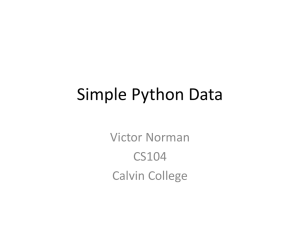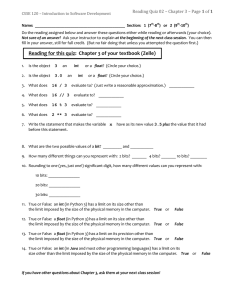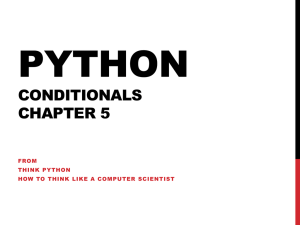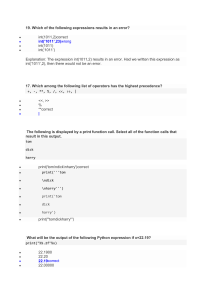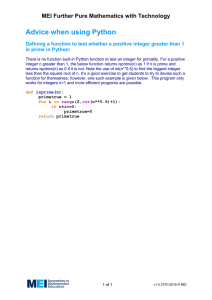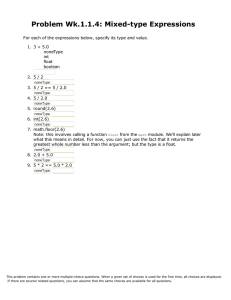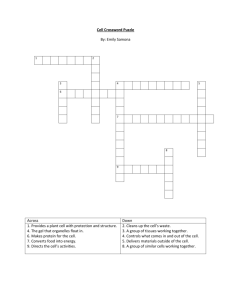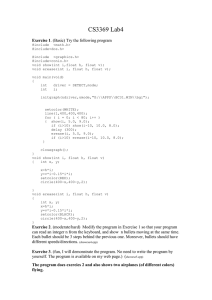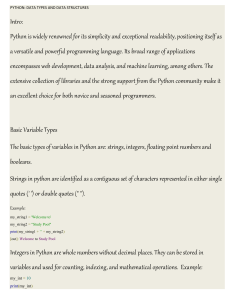Session Five
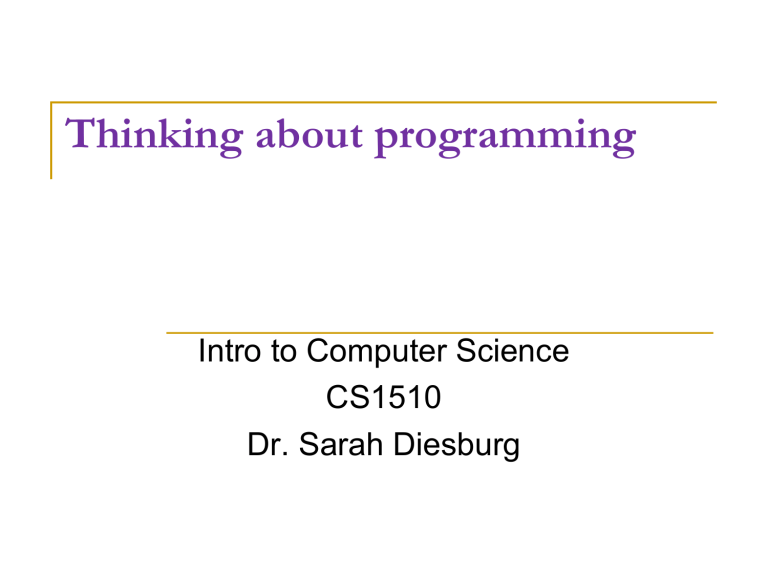
Thinking about programming
Intro to Computer Science
CS1510
Dr. Sarah Diesburg
Something New
We can now introduce constants
Written in ALL_CAPS_STYLING
Holds values that don’t change throughout your program
Why would we want to use constants?
2
Variables and Types
Python does not require you to pre-define the type of a variable
What type a variable holds can change
Unlike other programming languages…
However, once a variable has a value it’s type matters a lot!
Is x+3 legal?
Thus proper naming is important!
Examples
For example, you can’t use the + operator with a string and an int
>>> “Sarah”+3
Python tries to convert one operand to the other operand’s type
What about the + operator with a float and an int?
>>> 4.1 + 3
>>> 3 + 4.1
4
Python “Types”
integers: 5
floats: 1.2
Booleans: True (note the capital)
Boolean named after Mathematician George
Boole strings: “anything” or ‘something’ lists: [,]: [‘a’,1,1.3]
others we will see
Use of quotation marks with String type
Python allows the use of either
Single quotes
‘This is a single quote sentence’
Double quotes
“This is a double quote sentence”
Triple quotes
“”” These are most often used when writing comments that span over several lines.”””
What is a Type?
A type in Python essentially defines two things:
Internal structure of the data (what it contains)
Kinds of operations you can perform
Different methods are associated with different types of data
>>> abc.capitalize()
Method you can call on strings, but not integers
Have you seen something like this before?
Converting Types
A character ‘1’ is not an integer 1. We’ll see more on this later, but take my word for it.
You need to convert the value returned by the input() command (characters) into an integer
>>> inputString = “123”
>>> inputInteger = int(inputString)
Type Conversion
int(someVar) converts to an integer
float(someVar) converts to a float
str(someVar) converts to a string
should check out what works:
int(2.1)
2, int(‘2’) 2, but int(‘2.1’) fails float(2)
2.0, float(‘2.0’) 2.0, float(‘2’)
2.0, float(2.0)
2.0
str(2)
‘2’, str(2.0) ‘2.0’, str(‘a’) ‘a’
Knowing the type
Since the type of data stored in a variable can change, Python let’s us ask what the current type is:
